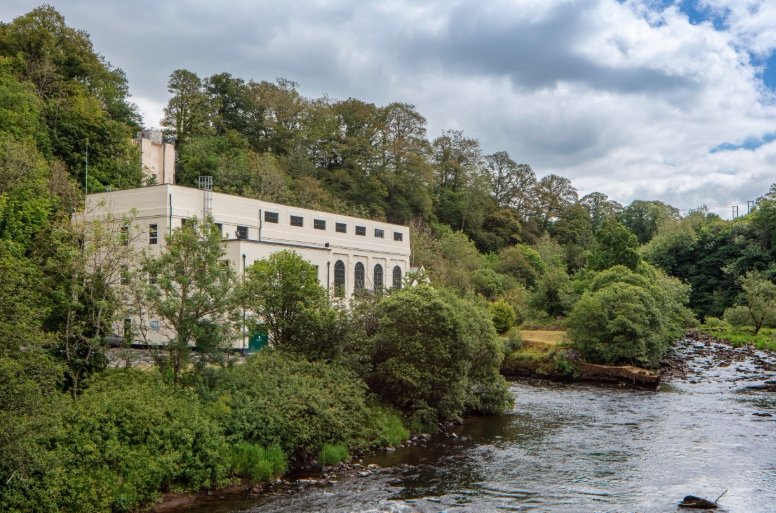A new plan could see centuries-old hydro power stations in Scotland’s south-west get a sunny upgrade. Renewable energy giant Drax says it’s looking at adding hundreds of solar panels to its historic sites in Galloway and Lanark — some of which have been powering Scottish homes for nearly a hundred years.
If the scheme goes ahead, the panels would help supply vital back-up power on site, slashing reliance on the local grid and boosting the overall resilience of these much-loved hydro landmarks.
Nearly a Century On: Hydropower Still Pulling Its Weight
It’s easy to forget just how far back Scotland’s love affair with hydropower goes. Take the Lanark hydro system — built in 1926 — which is still humming along by the banks of the Clyde.
Bonnington and Stonebyres, the two stations making up the Lanark scheme, tap into the river’s natural flow to generate clean electricity. And they’re not alone.
Down in Galloway, the story’s much the same. The scheme there opened in 1935, stringing together six stations — Drumjohn, Kendoon, Carsfad, Earlstoun, Glenlee and Tongland — across a stretch that runs from Carsphairn to near Kirkcudbright.
One line here.
Together, the sites can power more than 400,000 homes. Not bad for infrastructure older than many of the roads that lead to them.

Why Add Solar? A Simple Idea With Big Impact
So why tack solar panels onto sites already generating renewable energy? For Drax, it’s about back-up. Right now, these hydro stations rely on electricity from the local grid for things like maintenance work and when river levels drop.
A few hundred solar panels scattered around rooftops and spare land could change that. Instead of paying for backup supply, each station would make its own — greener, cheaper, and more self-sufficient.
It’s early days though. A Drax spokesperson admits the proposals are still just that — proposals. But they say the potential impact is “significant” if the numbers stack up.
One short line here.
If they do, Scotland could have one of the country’s oldest renewable systems working hand-in-hand with one of the newest.
A Balancing Act: Old Buildings Meet New Tech
Of course, the idea of fixing modern solar panels onto historic power stations will need careful thought. Some of these sites are architectural gems, tucked between hills and trees that have hidden them for decades.
Here’s what needs to be weighed up:
-
How to preserve the character of sites commissioned as far back as the 1920s.
-
Whether there’s enough space for panels without disturbing protected land.
-
Making sure any new infrastructure works with existing hydro systems.
Locals in areas like New Lanark — itself a UNESCO World Heritage Site — will likely have a few questions before the first panels are installed.
Drax’s Expanding Green Portfolio
Drax snapped up these hydro schemes back in December 2018, adding them to a portfolio that includes everything from pumped storage to biomass. The company’s goal is to hit net zero and help decarbonise the grid — and using old hydro to test new ideas is part of that playbook.
The idea is simple: the more you can make each site self-sufficient, the less you have to rely on fossil fuel-heavy grid backup.
One sentence here.
It also speaks to a bigger trend in energy: hybrid sites that mix technologies to keep the lights on come rain or shine. In Scotland, where the weather changes five times a day, that’s not a bad strategy.
What Happens Next?
For now, it’s all about feasibility. Engineers will need to work out how many panels each site could handle, where they’d go, and whether planning permissions might slow things down.
One short line here.
Local communities will also get a say — balancing Scotland’s green ambitions with the need to keep the country’s historic hydro heritage intact.
If all goes smoothly, Drax’s quiet experiment in Galloway and Lanark could end up setting a fresh example for other vintage renewables across the UK: proving that even the oldest power stations still have room to shine.


















